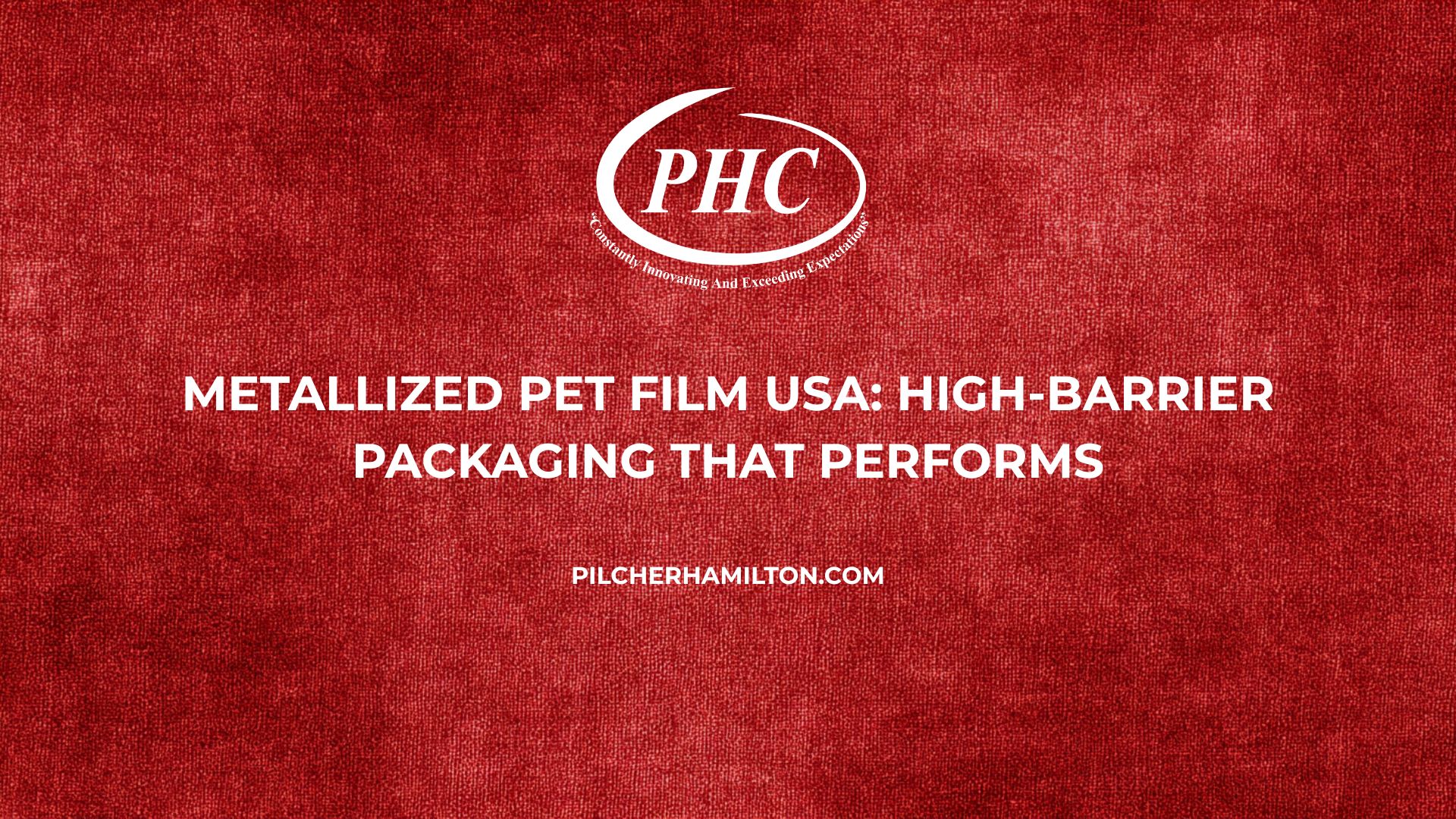Metallized PET boosts oxygen and moisture barrier with a lightweight reflective layer, enabling extended shelf life and aroma retention across snacks, coffee, pet food, nutrition sachets, and more. Here’s how to specify it, convert it, and scale with confidence.
Why Metallize?
Vacuum‑deposited aluminum on oriented PET creates a thin, continuous metal layer that materially improves barrier without heavy gauges. The result is a cost‑effective path to performance where OTR/WVTR targets, grease resistance, and aroma lock‑in are critical.
Application Highlights
- Coffee & Tea: Aroma and fresh‑roast notes demand strong oxygen barrier; metallized PET is a common barrier web in multi‑layer laminates.
- Snacks & Confectionery: Moisture barrier slows staling; reflective surfaces also help with brand differentiation.
- Pet Food & Treats: Odor containment plus puncture resistance from PET’s tensile strength.
- Nutraceuticals & Powdered Mixes: Light barrier and moisture control for actives.
Pairing Metallized PET in Laminations
Metallized PET typically serves as the barrier web within a laminate. You may pair it with:
- BON (Biax‑Oriented Nylon) for puncture resistance and toughness. → https://www.pilcherhamilton.com/biax-oriented-nylon/
- Sealant Layers such as PE or coextrusions for hermetic seals.
- Print Webs where corona‑treated surfaces ensure ink anchorage.
High‑Bond Options
PHC supports metallized high‑bond requirements for demanding pouch formats and high‑stress applications, helping reduce de‑lam risk during forming, filling, and distribution. → https://www.pilcherhamilton.com/metallized-high-bond-strength/
Metallized vs PVDC‑Coated PET
Both metallized and PVDC‑coated PET can deliver elevated barrier; your choice often depends on processing environment, optics, sealing strategy, and regulatory considerations. PHC provides access to both approaches, plus clear high‑barrier options where product visibility matters. → https://www.pilcherhamilton.com/pvdc-coated/
Converting Considerations
- Surface Treatment: Ensure appropriate surface energy on the print or adhesive side; corona‑treated options are available. → https://www.pilcherhamilton.com/corona-treated/
- Slit Quality: Clean edges minimize dust and gel‑pickup—crucial for high‑speed VFFS/HFFS. → https://www.pilcherhamilton.com/slitting/
- Printing: Metallized PET can be reverse‑printed for mirror‑finish effects or over‑laminated for protection. → https://www.pilcherhamilton.com/printing-6-color/
- Coating: Tie‑coats, primers, or specialty functional coatings can be added as needed. → https://www.pilcherhamilton.com/coating/
Quality Assurance & Testing
Expect documented specs, adhesion testing (peel), and barrier verification as appropriate to your program. PHC’s team aligns test plans with your shelf‑life goals to de‑risk scale‑up.
Logistics That Keep Lines Running
With deep inventory and Greer, SC distribution, PHC helps you react to promotions, seasonal surges, or reformulations without jeopardizing uptime.
Call to Action: Specify the right metallized PET structure today.
Request a Quote → https://www.pilcherhamilton.com/request-quote/
Contact PHC → https://www.pilcherhamilton.com/contact-us/
- Metallized PET (general) → https://www.pilcherhamilton.com/metallized/
- Metallized High‑Bond PET → https://www.pilcherhamilton.com/metallized-high-bond-strength/
- PVDC‑Coated PET → https://www.pilcherhamilton.com/pvdc-coated/
- BON + PET Laminations → https://www.pilcherhamilton.com/biax-oriented-nylon/
FAQs
Q1: Can metallized PET be used where product visibility is required?
Not directly; consider clear high‑barrier or selective metallization strategies, or design windows via registered patterns, depending on your converter setup.
Q2: How does metallized PET compare to foil?
It offers strong barrier at lighter weight and improved flex crack resistance relative to foil in many flexible formats, with excellent processability.Q3: Is metallized PET recyclable?
End‑of‑life pathways depend on local infrastructure and laminate design. Ask PHC about PCR content strategies and down‑gauging to reduce material use.

